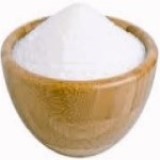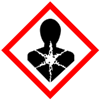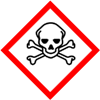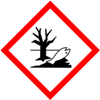 |
Zinc Pyrithione CAS 13463-41-7 SDS Safety Data Sheet of Supplier Exporter Manufacturers' Representative |
Email: info@ammol.org |
Call Toll Free +1-855-552-6665 |
Zinc Pyrithione
CAS Number: 13463-41-7
Molecular Formula: C10H8N2O2S2Zn
Molecular Weight: 317.70

Zinc Pyrithione
Zinc Pyrithione or Pyrithione Zinc SDS, Safety Data Sheet
MSDS Sheet, Material Safety Data Sheet 12-April-25
Section 1. Product Information
Product Name & Other Names: Zinc Pyrithione or Pyrithione Zinc.
CAS No.: 13463-41-7
EINECS EC Number: 236-671-3
Relevant uses and uses advised against (if any): Industrial Manufacturing.
Supplier: American Molecules, 9910 Bent Oak Dr, Houston, TX 77040, USA.
Call Toll Free: 1-855-55-AMMOL 1-855-552-6665.
In case of emergency contact: Will be given with the supply.
Section 2: Hazards Identification
GHS, Globally Harmonized System Classification in accordance with 29 CFR 1910
Classification according to Regulation (EC) No 1272/2008
Acute toxicity, oral Category 3 H301
Serious eye damage, Category 1 H318
Acute toxicity, inhalation Category 1, 2, H330
Reproductive toxicity Category 1A, 1B H360
Specific target organ toxicity - repeated exposure (Category 1), H372
Chronic aquatic toxicity (Category 1), H410
Labeling according to GHS & Regulation (EC) No 1272/2008
GHS Label Elements  Health Hazard |
GHS Label Elements |
GHS Label Elements |
GHS Label Elements |
Signal Words: Danger
Hazard statements:
H301 Toxic if swallowed.
H318 Causes serious eye damage.
H330 Fatal if inhaled.
H360 May damage fertility or the unborn child.
H372 Cause damage to organs through prolonged or repeated exposure.
H410 Very toxic to aquatic life with long lasting effects.
Precautionary statements:
P201: Obtain special instructions before use.
P202: Do not handle until all safety precautions have been read and understood.
P260: Do not breathe dust/fume/gas/mist/vapors/spray.
P264: Wash --- thoroughly after handling.
P270: Do not eat, drink or smoke when using this product.
P271: Use only outdoors or in a well-ventilated area.
P273: Avoid release to the environment.
P280: Wear protective gloves/protective clothing/eye protection/face protection.
P284: Wear respiratory protection.
P301+310: IF SWALLOWED: Immediately call a POISON CENTER or doctor/physician.
P304+340: IF INHALED: Remove victim to fresh air and keep at rest in a position comfortable for breathing.
P308+313: IF exposed or concerned: Get medical advice/attention.
P405: Store locked up.
P403+233: Store in a well-ventilated place. Keep container tightly closed.
Section 3: Composition and Information on Ingredients
Product Name & Other Names: Zinc Pyrithione or Pyrithione Zinc.
CAS No.: 13463-41-7
EINECS EC Number: 236-671-3
Section 4. First Aid & Procedure
Always get medical attention after the first aid is over.
Ingestion: Never give anything by mouth to an unconscious person. Get medical attention.
Skin: Immediately flush skin with plenty of water for at least 15 minutes. Remove and wash contaminated clothing and shoes before reuse. Get medical attention if irritation develops.
Eyes: Immediately flush eyes with plenty of water for 15 minutes, occasionally lifting upper and lower eyelids. Hold eyelids apart during irrigation. Get medical attention.
Inhalation: Remove person to fresh air. If breathing is difficult, give oxygen. If not breathing administer artificial respiration. Get medical attention.
Section 5. Fire Fighting Measures
Fire/Explosion: Not considered to be a fire and explosion hazard. However, it will burn at high temperature.
Extinguishing Medium: Water spray, alcohol-resistant foam, dry chemical, or carbon dioxide. Avoid solid water jet.
Special hazards arising from the substance or mixture: Zinc oxides, carbon oxides, nitrogen oxides, sulfur oxides and fumes may evolve.
Fire Fighting Instructions: Use suitable protective equipment for surrounding fire.
Special Information: In the event of a fire, wear full protective clothing and NIOSH-approved self-contained breathing apparatus with full face piece operated in the pressure demand or other positive pressure mode.
Section 6. Spills and Disposals
Personal precautions, protective equipment, and emergency procedures: Avoid breathing dust/fumes/gas/mist/vapors/spray. Use individual protective equipment (waterproof boots, suitable protective clothing, safety glasses, etc.).
Environmental precautions: Do not let the product enter drains, soil, or water sources.
Methods and materials used for containment cleanup procedures and Storage: Do not inhale dust, vapors, mist, or gas. Avoid dust formation. Contain spilled material. Cover with an inert, non-combustible absorbent material, (e.g., sand, earth, diatomaceous earth, vermiculite). Use a shovel to put the material into a convenient waste disposal container.
Section 7. Handling and Storage
Very toxic hazardous material.
Precautions for safe handling: Apply according to good manufacturing and industrial hygiene practices. Ensure proper ventilation. In case of insufficient ventilation, wear suitable respiratory equipment. Wash thoroughly after handling. Do not drink, eat, or smoke while handling. Avoid contact with skin, eyes, and clothing. Minimize dust generation. Avoid breathing dust/fumes/gas/mist/vapors/spray. Keep container tightly closed. Avoid ingestion and inhalation. Use individual protective equipment (waterproof boots, suitable protective clothing, safety glasses, etc.).
Conditions for safe storage, including any incompatibilities: Store in cool, dry, and ventilated area away from heat sources and protected from sunlight in tightly closed original container. Keep air contact to a minimum. Store protected from heat, sparks and ignition sources and incompatible materials. Avoid contact with skin and eyes. Avoid inhalation of dust/mist/vapor. Do not store with incompatible materials like strong oxidizing agents. Storage: Room Temperature. Recommended in a cool and dark place, <15C.
Section 8. Exposure Controls & Personal Protection
Exposure Limits:
TWA 0.35 mg/m3.
Engineering Controls: Use adequate exhaust ventilation to keep airborne concentrations below the allowable exposure limit.
Ventilation System: A system of local and/or general exhaust is recommended to keep employee exposures as low as possible. Local exhaust ventilation is generally preferred because it can control the emissions of the contaminant at its source, preventing dispersion of it into the general work area.
Personal Respirators (NIOSH Approved): For conditions of use where exposure to dust or mist is apparent and engineering controls are not feasible, a particulate respirator may be worn. For emergencies or instances where the exposure levels are not known, use a full-face positive-pressure, air-supplied respirator.
Skin Protection: Wear protective gloves and clean body-covering clothing.
Eye Protection: Use chemical safety goggles and/or full-face shield where dusting or splashing of solutions is possible. Maintain eye wash fountain and quick-drench facilities in work area.
Other Control Measures: Maintain good housekeeping in work area. Handle in accordance with good industrial hygiene and safety practice.
Section 9. Physical & Chemical Data
Appearance: Off white aqueous dispersion, free from signs of impurities for liquid and powder for dry substance.
Odor: None
Odor threshold: No data found.
pH: No data found.
Relative density: No data found.
Melting point/freezing point: 240C literature.
Initial boiling point and boiling range: Decomposes.
Flash point: No data found.
Auto-ignition temperature: No data found.
Decomposition temperature: No data found.
Upper/lower flammability or explosive limits: No data found.
Vapor pressure: No data found.
Vapor density: No data found.
Evaporation rate: No data found.
Flammability (solid, gas): No data found.
Partition coefficient: n-octanol/water: No data found.
Solubility(ies): Negligible solubility in water. Soluble in chloroform and dimethylformamide.
Viscosity: No data found.
Section 10. Stability and Reactivity
Chemical Stability: Stable under normal temperatures and pressures.
Incompatibility (Materials to Avoid): Oxidizing agents.
Conditions to Avoid: Incompatible materials, excessive heat.
Hazardous Decomposition Products: Zinc oxides, carbon oxides, nitrogen oxides, sulfur oxides and fumes may evolve.
Hazardous Polymerization: Will not occur.
Section 11. Toxicological Information
Toxicity:
Acute toxicity estimate Oral: 221 mg/kg.
Acute toxicity estimate Inhalation: 0.14 mg/l - dust/mist
Carcinogenicity: No data found.
Specific target organ toxicity: May cause damage to organs through prolonged or repeated exposure. Overexposure may cause reproductive disorder. May cause congenital malformation in the fetus. Presumed human reproductive toxicant.
Section 12. Ecological Information
Ecotoxicity: Very toxic to aquatic organisms, may cause long-term adverse effects in the aquatic environment.
Persistence and Degradability: This product is not readily biodegradable.
Environmental Precautions: DO NOT DISCHARGE into drains and rivers.
Section 13. Disposal Suggestions
Dispose of in accordance with all applicable local, state, and federal regulations at an approved waste disposal facility.
Section 14. Transport and Label Information
DOT USA & ADR/RID Europe:
UN-No UN 2811
Proper Shipping Name: Toxic solid, organic, n.o.s. (Pyrithione zinc).
Hazard Class 6.1, Packing Group II.
IMDG/IMO
UN-No UN 2811
Proper Shipping Name: Toxic solid, organic, n.o.s. (Pyrithione zinc).
Hazard Class 6.1, Packing Group II.
IATA:
UN-No UN 2811
Proper Shipping Name: Toxic solid, organic, n.o.s. (Pyrithione zinc).
Hazard Class 6.1, Packing Group II.
Section 15. Regulatory Information
USA:
SARA 311/312: See section 2.
Section 16. Other Information
Disclaimer:
**************************
Our company provides this MSDS sheet in good faith but makes no representation as to its comprehensiveness or accuracy. This SDS sheet is intended only as a guide to the appropriate precautionary handling of the material by a properly trained person using this product. The above information has been compiled from various sources and has the possibility of discrepancy and being out-dated information. Individuals receiving the information must exercise their independent judgment and do further search in determining its appropriateness for a particular purpose. In no case shall our company be liable to loss or damages by the product user.
**************************
Please visit Main Page of Zinc Pyrithione Suppliers.
American Molecules, also known as ammol.org is a distributor, supplier and manufacturers' representative of all types of Pharmaceuticals, Functional Ingredients, Excipients and Specialty Chemicals in Texas USA. Our principals manufacture supply and export USP NF BP, Ph Eur, etc grades of chemicals pure and reagent grade, mineral fortifiers, FCC food grade. Tailor made particle size and customized specifications are offered. The principal's facility is having one or more of the certifications like FDA approval and GLP, cGMP, ISO9001, ISO14001, ISO/IEC 17025, ISO22000, FSSC 22000, ISO45001, FSSAI, Kosher, HALAL, COPP, WHO-GMP certified and Written Confirmation (WC) for export to Europe is available. The manufacturers suppliers and exporters observe WHO Good Manufacturing Practices and Good Laboratory Practices.





Suppliers and Manufacturers' Representative:

9910 Bent Oak Dr
Houston, TX 77040, USA
Call Toll Free: 1-855-55-AMMOL 1-855-552-6665
Email: info@ammol.org

